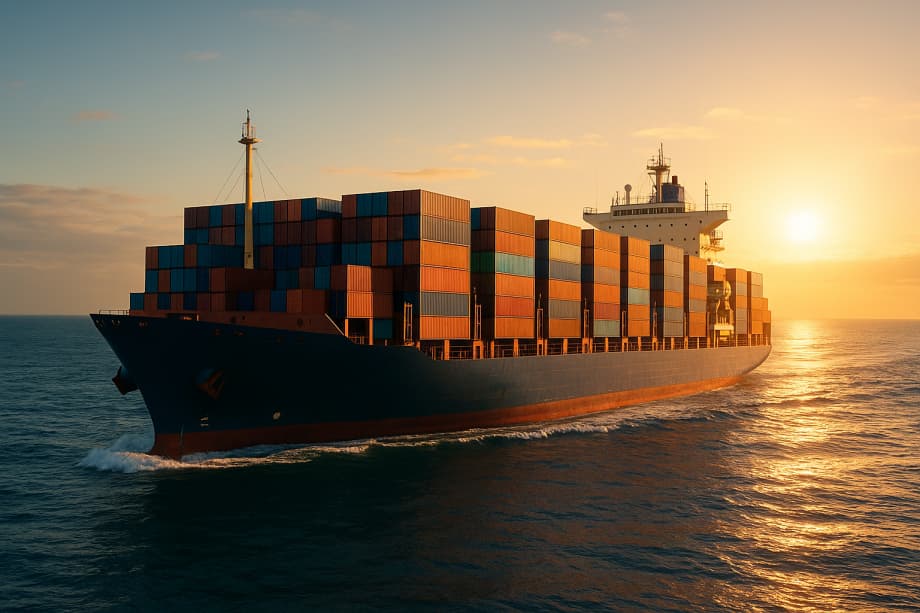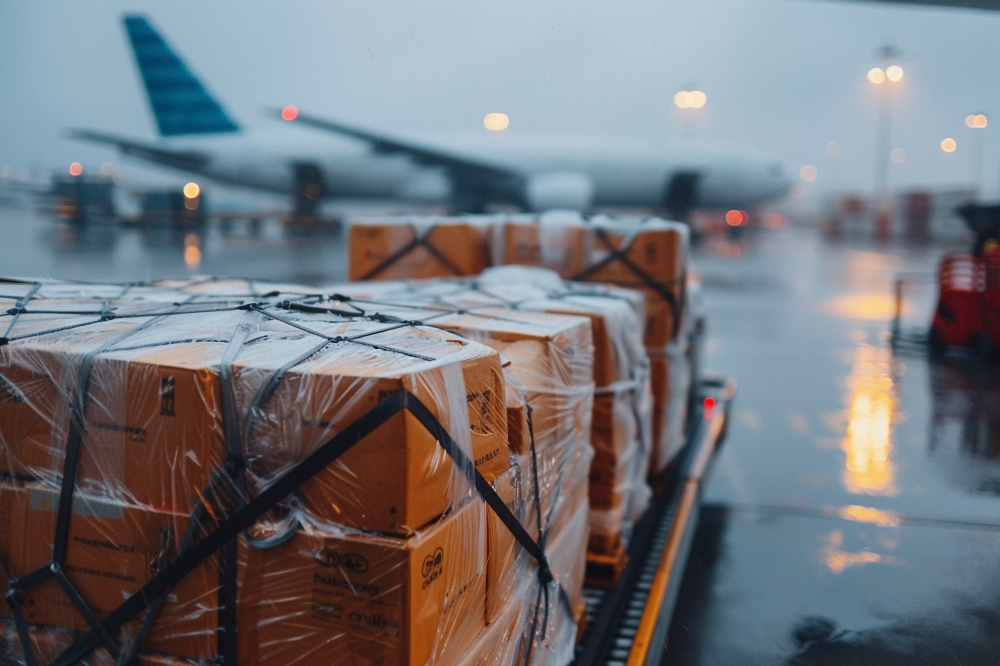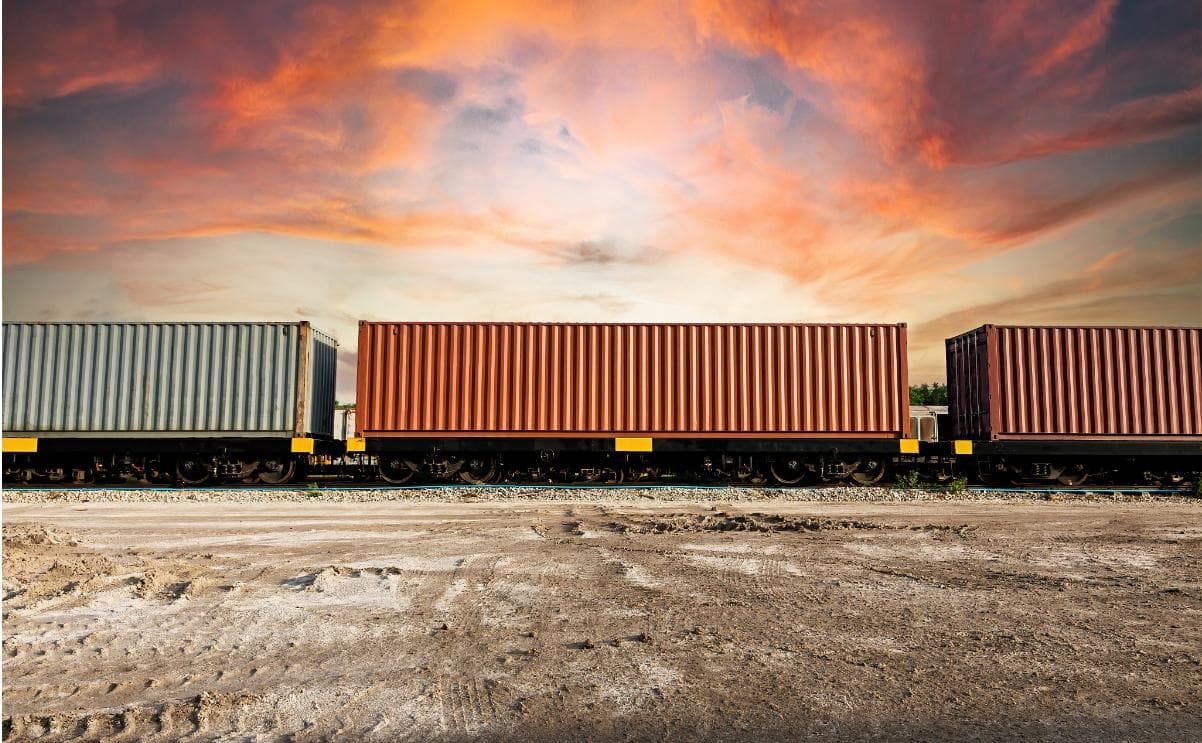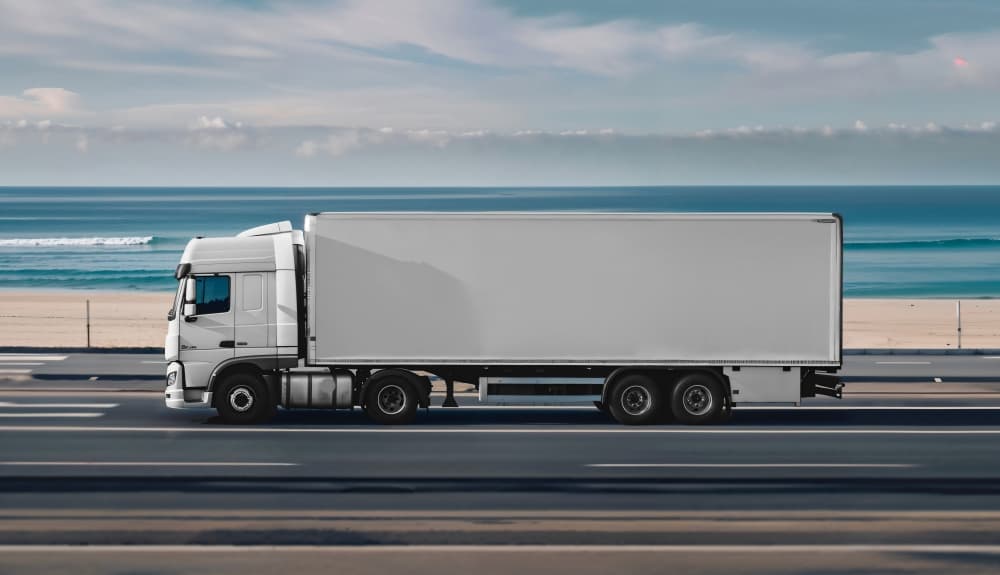Ocean Freight, Air Freight, Rail Freight & Road Freight: A Complete Comparison of Pros and Cons
When transporting goods across international borders, such as from China, the USA, Europe, and elsewhere, you must choose the best shipping method to save money, ensure timely completion, and consider the planet. CargoesPi.com, a China based forwarder, provides custom solutions in ocean freight FCL, rail freight, and road freight. This guide will help you select the most suitable logistics company for your business.

Ocean Freight
The majority of products traded worldwide are shipped using sea freight, and more than nine out of ten goods are transported by ship.
As a reference, the 10 largest ports moved approximately 283.61 million TEUs in 2024. The fact is, ships move much heavier cargo than airplanes and also cost much less. For this reason, it's particularly popular for moving large volumes of agricultural goods and raw materials.
The global merchant fleet and seaborne cargo grew substantially between 2013 and 2019. In these years, it was estimated that trade by sea rose by about 35 percent, compared to a 17 percent increase in merchant ship capacity.
Pros:
- Low Pricing: It is a budget-friendly way to transport large goods.
- Cargo Capacity: Ocean freight's cargo capacity is very large, making it suitable for sending a lot of goods at once.
- Sustainability: It helps to lower greenhouse gas emissions.
Cons:
- Transit Time: Delays and set routines involved with ocean freight make it slower than air or train transport.
- Dependence on Infrastructure: Ocean shipping requires port facilities, and disruptions or inefficiencies can delay the process and raise costs.
What goods are suitable for ocean freight?
Large and heavy goods, such as machinery, automobiles, and bulk shipments, are more suited to ocean freight than air freight. Goods with lower urgency are also more suited to ocean freight.

Air Freight
Air freight is the fastest way to deliver products. You can ship with air freight from anywhere in the world, and handling short-distance moves is smooth and simple. Most major cities have airports, which means air freight makes it possible for businesses to ship to specific parts of a region.
Pros:
- Speed: Flying is the fastest transportation option, considerably cutting transit times.
- Reliability: Airlines are reliable and stick to their schedules, ensuring your flights are on time.
- Global Reach: Air freight allows transport to far-away and foreign regions, making it perfect for goods that must be delivered quickly and safely.
Cons:
- Cost: Air transportation is usually pricier than other kinds because of rising fuel costs and limitations on its capacity.
- Weight and Size Restrictions: Bulky or heavy items may not be allowed on planes.
- Environmental Impact: Air freight causes more carbon dioxide pollution than other ways of shipping.

Rail Freight
Trains are widely used for logistics in Europe, Asia and North America due to the continent's broad rail networks. Rail freight makes up about 15% of all freight moved across North America. This solution suits organisations that value prompt, timed, and dependable shipments where many rail connections are located.
Pros:
- Cost and Efficiency: When it comes to cost and shipping speed, rail is between ocean and air transportation. Compared to air and ocean, rail is often less expensive and much quicker.
- Capacity and Flexibility: Rail freight ships large quantities of goods and adapts easily to carry various goods.
- Sustainability: The emissions from trains are less than air emissions, but more than those from ocean transport.
Cons:
- Limited Network Coverage: Select areas may not have as comprehensive rail transport networks as road or Ocean paths.
- Intermodal Challenges: Seamless delivery may need cooperation between several types of transportation.

Road Freight
Road freight is often used to transport goods of all types worldwide. Its main use is goods between countries and the last delivery to customers' warehouse.
Road freight is often chosen in the Europe, Asia and North America, where most transport happens over roads, and it fits with every type of transport listed here.
Pros:
- Services direct to your door: Pick-up and drop-off are possible nearly everywhere, including rural areas.
- Adaptable and Versatile: Routes and times can be changed according to the different needs.
- Less Loading and Unloading: Moving goods less often reduces the risk of damaging anything.
- Reduced Packing Charges: The packing rules are less demanding than those for air or sea freight.
Cons:
- Liable to Delays: Can be slowed by busy roads, conditions on the route, the weather, and cross-border processing.
- Fuel fluctuation: By being sensitive to changes in fuel, shipping costs can rise and fall.
Comparison Table
| Mode | Cost | Speed | Capacity | Flexibility | Environmental Impact | Ideal For |
|---|---|---|---|---|---|---|
| Ocean Freight | Low | Slow | Highest | Moderate | Low | Bulk, heavy, non-urgent cargo |
| Air Freight | Very High | Fastest | Low | Moderate | Highest | Urgent, high-value, perishable |
| Rail Freight | Moderate | Moderate | High | Low-Moderate | Low | Bulk, long-distance, inland |
| Road Freight | Moderate | Moderate | Low | Highest | Moderate-High | Regional, door-to-door, flexible |

Multimodal Shipping: When One Route Isn't Enough
You will usually have to combine several freight methods to transport your cargo. Always select a multimodal shipping method if you need to move goods in multiple ways.
The process of multimodal shopping requires cargo to be transported using more than one mode. With an operational contract, the same carrier oversees and controls the entire move on each route instead of switching between different carriers.
Multimodal shipping is better in many ways than intermodal shipping. You get a more efficient process from start to finish. Having one company organize the whole journey means you only have to turn to one person for communication and any problems. Therefore, you can easily follow your order and know when it will arrive. Delivery will be faster since the goods do not first have to be transferred to another team.
Choosing the Right Freight Solution
- Ocean freight is the best cost and greenest options for shipping large and non-urgent loads.
- If you need something delivered quickly and value it highly, air freight is ideal, though it is also more costly.
- Rail freight on long-distance journeys must balance price and shipping speed.
- Road freight is the best option for quick and direct local or flexible deliveries.
CargoesPi offers full services for ocean, air, rail, and road freight to the USA (including major hubs like Los Angeles and Chicago), Australia, Europe, and other global destinations. With our expertise, your goods will always reach their destination quickly, safely, and affordably, regardless of the means of transport. Contact us now.
Frequently Asked Questions
-
What is the best shipping method for large or heavy goods?
Ocean freight is typically the best option for transporting large or heavy goods. It offers lower pricing and higher cargo capacity, making it ideal for bulk shipments and machinery.
-
How does CargoesPi manage multi-country shipments?
CargoesPi uses multimodal shipping, combining ocean, air, rail, and road transport. This allows seamless connections across the USA, Australia, Europe, and other global destinations, providing a more efficient and reliable delivery.
-
Can I ship urgent goods with CargoesPi?
Yes. CargoesPi offers air freight services for time‑sensitive shipments. This method ensures fast and secure delivery to destinations like Los Angeles, Chicago, and across the EU and Australia.

